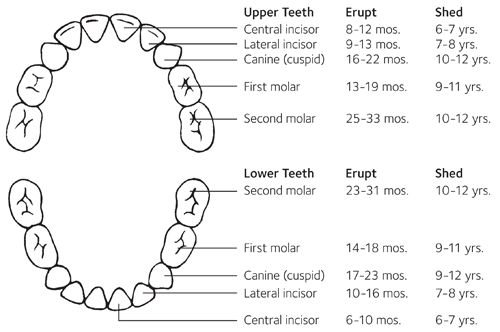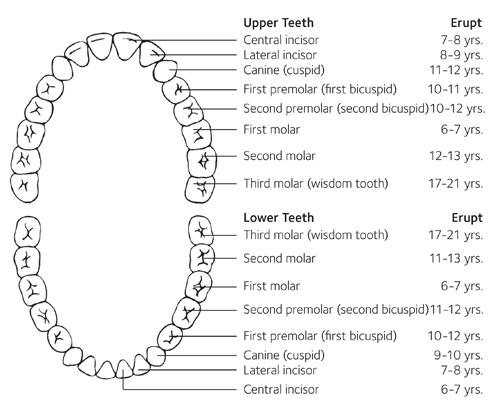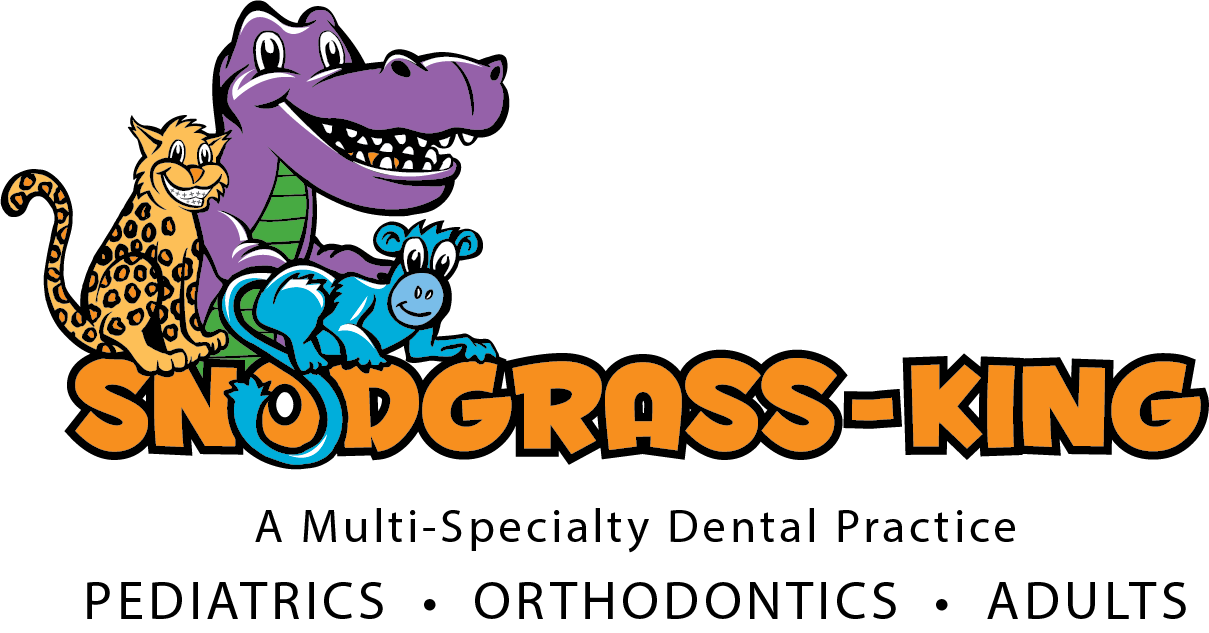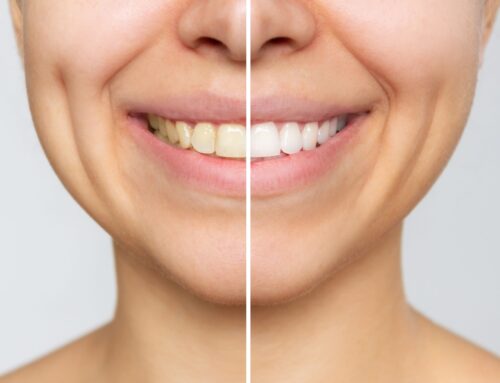Tooth Development of Children: A Guide for Parents
Every parent wants to know that their child is healthy and on track for a lifetime of smiles. When should my child’s first tooth come in? At what age should my child have all of their primary teeth? Is it normal that my child hasn’t lost a tooth yet? These are all great questions! And we’ve created this guide to help you understand the stages of tooth growth and development of your little ones.
Whether you are a first time parent or not, milestones are helpful in gauging the overall health of your child. They also help you know when to seek advice from a professional. However, with that being said, every child’s tooth development and health needs are unique. Don’t be alarmed if your child seems to be lagging, or is even ahead in their tooth development. If you have any questions or concerns regarding your child’s oral health, call or book an appointment with Snodgrass-King Dental today.
Primary Tooth Development
Tooth development starts before the baby is born when the mother is about 6 weeks pregnant. For this reason, among many others, it is important that the mother’s diet should have adequate amounts of calcium, phosphorus, vitamin C, and vitamin D. Doctors even recommend avoiding certain medicines during pregnancy because they can cause discoloration of your baby’s teeth during the early development stages. If we can guess correctly though, most of your questions are not about tooth development during pregnancy. They are about once your baby is born and when you should start seeing them.
 Generally speaking, your baby’s first tooth should erupt between 6 and 10 months, but up to 12 months or a year. The first tooth to come in is usually the front, center tooth on the lower jaw, also known as the central incisor. And the last teeth to come in are going to be their second molars at about age 2.
Generally speaking, your baby’s first tooth should erupt between 6 and 10 months, but up to 12 months or a year. The first tooth to come in is usually the front, center tooth on the lower jaw, also known as the central incisor. And the last teeth to come in are going to be their second molars at about age 2.
Refer to the primary tooth development chart by the American Dental Association for other milestones.
By the time your child reaches their 3rd birthday, they should have the majority of their primary teeth. Just like the eruption timeline, the eruption sequence can vary quite a bit from child to child too. So don’t be concerned if your child’s teeth don’t follow the pattern in the chart exactly.
Permanent Tooth Development
Your child will start losing their primary teeth at about 6 years old. Some kids lose their first tooth at the age of 4 or 5, and some lose their first tooth as late as age 7. But once, they start losing their primary teeth, their permanent teeth will begin to come in.
 The sequence of losing primary teeth and developing permanent teeth is going to be pretty much the same as the development of their primary teeth. The first ones in are going to be the first ones out and replaced by their permanent counterparts.
The sequence of losing primary teeth and developing permanent teeth is going to be pretty much the same as the development of their primary teeth. The first ones in are going to be the first ones out and replaced by their permanent counterparts.
By the age of 12, your child should have shed most, if not all of their baby teeth. And by the age 21, usually, all 32 adult teeth will have erupted.
It is very common for teens and adults to have to get their third molars, also known as wisdom teeth, removed. Often, your dentist will know ahead of time whether or not your child will need to get them removed. If not, there are several signs or symptoms that signal removal of your wisdom teeth is necessary. These signs and symptoms include jaw pain, repeated infection of soft tissue behind the lower last tooth, gum disease, and extensive tooth decay. If you have any concerns about your child’s permanent tooth development or questions about tooth removal, talk with one of our dental specialists.
Healthy Habits for a Healthy Smile
Healthy oral habits are key to making sure your child’s teeth remain strong and ensuring your child’s tooth development is on track. As soon as that first tooth erupts, adding fluoride to their diet and brushing their teeth twice a day is essential. Speak with your pediatrician to see if your tap water contains fluoride or whether your child needs fluoride supplements. Flossing should begin as soon as your child has two teeth that touch, or around the age of 2 or 3.
You should also book your baby’s first dental appointment once that first tooth comes in. Many young children have a fear of the dentist and as a parent, you want to make sure your child’s dentist is someone you can trust. This will allow your child and you to start building a relationship with your dentist early on. Plus, at Snodgrass-King, your baby’s first appointment up to 12 months old is FREE!
Visit Us Today
We hope you found this guide helpful, but remember all children are unique. If you have any questions or concerns about your child’s tooth development, don’t hesitate to reach out to us at Snodgrass-King Dental.
We are open and excited to be seeing patients! Our facilities have been sanitized from floor to ceiling, and we will continue to follow all ADA, CDC, and local health department guidelines. We understand the concern you may have regarding COVID-19 and want you to know that we share those concerns and are ensuring your safety in our offices.
Snodgrass-King Dental Associates has 5 locations across Middle Tennessee (Mt. Juliet, Murfreesboro, Franklin, and Cool Springs). Contact us today to see if we can help jump-start and be a resource in you or your child’s healthy, dental lifestyle. We offer a variety of services for both children and adults. We can also address any orthodontic needs for children, teens, and adults. If you have any questions, call us today at (615) 771-1111.




